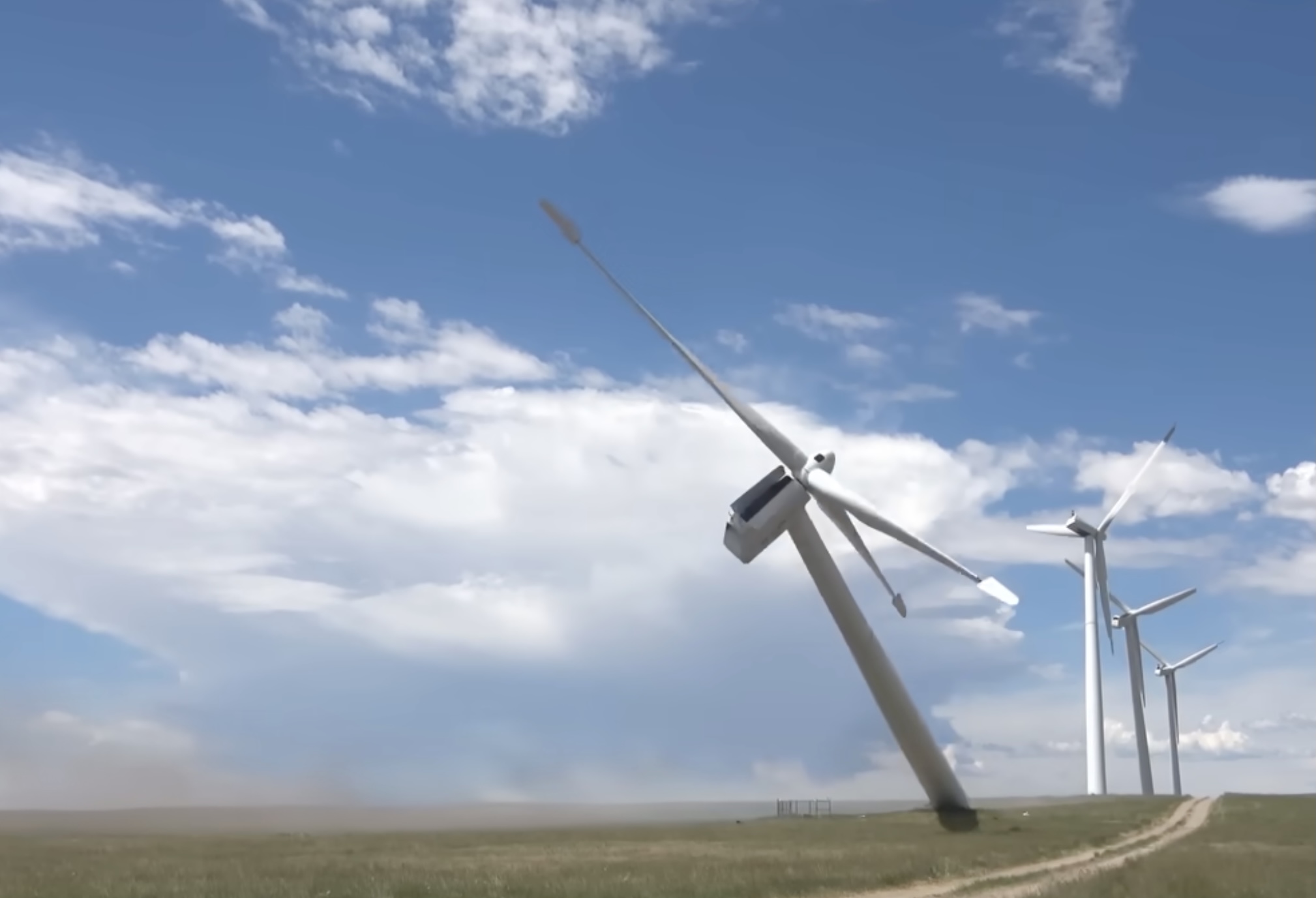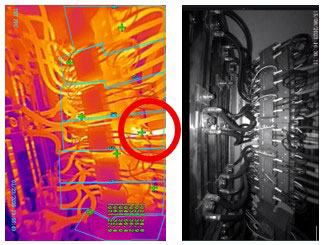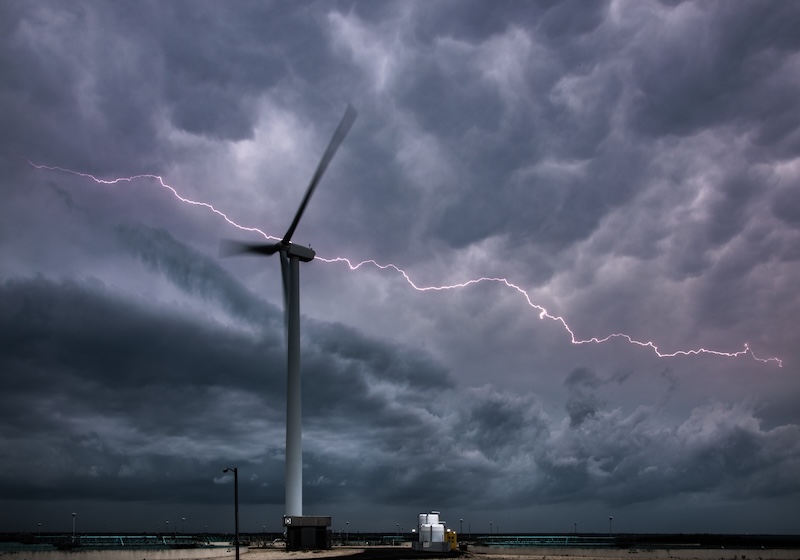Energy Storage
Schaltbau North America
Wind
Ole Binderup
Solar
Sun Ballast

Seattle’s Pioneer Square neighborhood is now home to the newly renovated Embassy Suites and Avalara Hawk Tower at 255 South King Street. The complex is connected by a sky bridge and allows for clear, spectacular views of Seattle, thanks to Vitro Architectural Glass.

The renovation to the tower was done in two phases. Phase one focused on updating the hotel tower. At 23 stories, the Embassy Suites houses 282 rooms, 13,000 square foot indoor pool and 26,777 square feet of restaurant and retail space in the lobby. Phase two included the renovations of the 19-story Hawk Tower and the connecting sky bridge to the Embassy Suites.
Architects selected Solarban R67 glass by Vitro for this façade renovation because of its impressive performance and eye-catching reflectivity. Designed for optimal solar control, Solarban R67 glass not only enhances views but also improves occupant comfort, making it the perfect choice for contemporary designs.
By connecting the two buildings via skybridge, 255 South King Street sets itself apart in terms of construction. It also sets itself apart by featuring Solarban R67 glass in its design. Through thoughtfully blending the buildings together, Vitro Glass helped elevate 255 South King Street’s appearance and create more enjoyable, energy-efficient space for occupants.
Project Credits:
Vitro Architectural Glass | vitroglazings.com

EDP Renewables, a renewable energy leader in New York has torn down its Madison Wind Farm. Consructed in 2000 and located in Madison County, the Madison Wind Farm has complemented the surrounding agricultural land, and was the first commercial wind farm constructed in New York. After implosion, recycling efforts will commence. North Coast has established material receivers for all components of the turbines, including the following:
Video available here
At the time of Madison’s construction in 2000, the wind farm was anticipated to have an operational lifespan of 20 to 25 years. As of 2025, the project has come to the end of that lifespan and is no longer considered economically viable, primarily due to the current turbines being out of production, making repairs and obtaining replacement parts increasingly difficult and costly.
EPD | https://www.edp.com/en

Catalyst Power Holdings LLC ("Catalyst Power"), an independent provider of retail energy and complementary energy solutions for large commercial and industrial customers, is launching its retail electricity services in New Hampshire. Catalyst Power integrates retail electricity with complementary onsite energy solutions—including cogeneration (CHP), solar, and energy storage— to help businesses boost efficiency and resilience. Catalyst Power's commercial retail electricity service is now available to customers of Eversource New Hampshire.
“With energy prices climbing and the grid under pressure from growing demand, New Hampshire businesses need solutions that can be tailored to their situation,” said Gabriel Phillips, CEO of Catalyst Power Holdings. “Catalyst Power helps commercial and industrial customers manage costs and diversify their energy strategies through retail electricity, onsite generation like cogeneration and batteries, and other turnkey solutions. In this environment, flexibility is a competitive advantage.”
Catalyst Power is an independent energy solutions provider that integrates retail electricity with complementary onsite technologies—including cogeneration, energy storage, and solar—to help commercial and industrial businesses improve efficiency, reduce costs, and enhance energy resilience with zero capital expenditure. The company leverages a proprietary technology platform to analyze customer data, identify opportunities, and underwrite and fund customized energy solutions. By operating and maintaining on-site assets, Catalyst Power delivers reliable, low-risk energy savings and improved outcomes for its retail energy clients.
Catalyst Power | https://catalystpower.com

Rosendin, the nation's largest employee-owned electrical contractor, announces the purchase of a two-building office complex in San Jose that will serve as its new headquarters. The 130,944 square foot property at 3000 and 3030 Orchard Parkway features two- and three-story Class A office buildings.
The $23 million investment represents a significant milestone for Rosendin, which has experienced explosive growth under the leadership of CEO Keith Douglas and his executive team. The new campus will allow Rosendin to create a unified work hub to fit the expanding team while continuing Rosendin’s commitment to its hometown roots.
"This investment in our new headquarters demonstrates our dedication to San Jose, where our company began in 1919, and positions us for continued growth as we bring our teams together in one location," said Matt Hisaka, Rosendin Chief Financial Officer. "The new campus will enhance collaboration and create a more efficient work environment that supports our employee-owners and the complex projects we deliver for our clients.”
The property, known as The Orchards, was purchased from Barings, a real estate investment firm. Rosendin has selected architecture firm ARC TEC, Inc. to renovate the space to create a modern, collaborative environment that supports the company's technology-driven approach to building quality installations.
"We are thankful to our employees and our partners, and as we continue to grow, we remain dedicated to the local community that has supported us for 106 years," said Keith Douglas, Rosendin Chief Executive Officer. "This new headquarters allows us to strengthen our local presence while continuing our tradition of community involvement and support for the organizations that make San Jose a great place to live and work."
Rosendin started from humble beginnings when WWII Navy Veteran Moses Rosendin launched his business from a small workshop on Race Street. Today, Rosendin is a $3.7B employee-owned company with offices across the country, building landmark projects for tech giants, manufacturers, healthcare companies, airports, and hospitality groups.
Rosendin | www.rosendin.com

GridStrong, the all-in-one platform for automating electric grid compliance and operations, announced it has raised an oversubscribed seed funding round to transform how power asset owners navigate increasingly complex regulatory and reliability frameworks. GridStrong's solution automates costly and tedious interconnection and compliance processes—reducing time, improving quality, and enabling higher system reliability. The $10 million round was led by Congruent Ventures with participation from Energize Capital, along with strategic investments from Engie Renewables North America and other major utilities.
The grid faces unprecedented strain driven by load growth, interconnection bottlenecks, evolving generation mix, and underinvestment in new transmission. As capacity constraints intensify, regulators are introducing highly technical, time-critical requirements. As a result, owners and operators of generation, transmission, and large-load assets face mounting compliance pressures. But compliance is still managed through fragmented systems, spreadsheets, and labor-heavy processes that were never designed for the pace or sophistication required for the modern grid.
GridStrong's solution combines AI-native software with deep technical understanding to streamline complex workflows and give asset owners clarity, control, and confidence without the usual rework, delays, and audit risk.
"Standards are evolving faster than ever, data is multiplying, and the stakes for noncompliance are high," said Tom Scaramellino, GridStrong Co-Founder and CEO. "GridStrong replaces the unscalable model of manual, consultant-heavy workflows with end-to-end automation built by engineers who helped write the very standards shaping our industry."
Founded in February 2025 by Tom Scaramellino, an energy software industry veteran, and Ryan Quint, the former Director of Engineering at the NERC, the company already boasts more than half of the 25 largest renewable asset owners as customers, representing hundreds of gigawatts of power across North America. Strategic utility investors, including Engie, have been among GridStrong's early adopters and design partners.
"Leading asset operators have seen that GridStrong combines deep domain expertise with proven software execution capability," said Kevin Kopczynski, Partner at Congruent Ventures. "Their unique insights are exactly what is required to unlock the potential of Vertical AI to address today's challenges and achieve the speed and performance the grid demands."
"From the beginning of Energize, we have tracked how shifts in consumer behavior, industrial development, and digital technology are reshaping the grid," said John Tough, Managing Partner of Energize Capital. "Grid congestion, reliability, and rising demand have made compliance requirements more complex than ever — and platforms like GridStrong's are vital to deliver the operational scale to meet this need."
GridStrong takes a unique approach by seamlessly integrating dispersed plant information into intelligent workflows and clearly structured data frameworks. Their enterprise-class platform serves the complete asset lifecycle, from the initial interconnection request to post-COD operations across all AC plant functions.
GridStrong | gridstrong.ai

Sunnen Products Company, a global leader in high-precision bore finishing and measurement, highlights its innovative entry level HTA Tube Hone machine, setting a new standard in bore finishing for the energy industry. With over 375 sold to date, the HTA Tube Hone represents a significant advancement in honing technology over manual honing, offering a range of features that deliver superior performance, efficiency, safety, ergonomics, and precision perfect for modern energy production environments including gas metering tube finishing, steam turbine rotor refinishing, and numerous other low stock removal applications.

Its all-electric design ensures quieter operation and eliminates oil leaks and heat buildup over hydraulic machines. It also provides better control and greater accuracy during bore reversals, vital for producing precision components used in energy equipment. This lean design boasts a smaller footprint compared to traditional horizontal tube honing systems, saving valuable floor space and capital in OEM, job shop, and repair facilities.
At the heart of the HTA Tube Hone is a Siemens Servo Stroker Motor with steel reinforced Belt Drive, providing quiet and precise operation, ideal for maintaining strict tolerances in rebuilding critical energy sector parts such as pump liners and oil rig hydraulic cylinders. The 3 HP (2.24 kW) spindle unit, combined with a servo stroker capable of speeds from 5 to 90 ft/min (1.5 to 27.4 m/min), delivers ample power for resurfacing and repairing at speeds of 20–300 RPM.
The HTA Tube Hone features a programmable auto tool feed system, increasing efficiency and consistency. A 55-gallon paper media coolant filtration unit with quick disconnects, casters, sight glass, and manual paper bed filter maintains clean coolant, improving honing performance and extending abrasive life and maintaining surface finish in energy facilities.
Ergonomics and safety are prioritized in the HTA Tube Hone’s design, reducing the risk of injury associated with manual honing that is often used for these components.
Operators benefit from the easy to use Siemens PLC with a color touch screen, which controls all machine functions such as stroke reversal, speeds, and a cross hatch calculation. The stroker joystick allows for precise positioning of the honing tool and stroke length adjustment during setup, while stroke control override enables short-stroking in any part of the bore for clean-up.
The HTA Tube Hone offers flexibility with its swiveling operator station that accommodates space constraints common in energy production environments. Multiple language options and metric/inch conversion are selectable from the touch screen, enhancing ease of use across global energy operations.
Additional energy-focused features include a load meter for quickly identifying tight bore spots in components like gas metering tubes, a universal chain vise work holding system to accommodate a range of part sizes, and an integral work tray for maintaining a clean, organized work area.
The HTA Tube Hone is compatible with ANR-275 tooling, allowing energy sector machine shops to leverage existing stone supports, master holders, and abrasives, thereby reducing tooling costs.
Sunnen | https://www.sunnen.com

RecycLiCo Battery Materials Inc. (“RecycLiCo”) (TSX.V: AMY | OTCQB: AMYZF | FSE: ID4), a critical mineral refining and lithium-ion battery upcycling company, and Alaska Energy Metals Corp. (“AEMC”) (TSX.V: AEMC | OTCQB: AKEMF | FRA: V7F) are pleased to announce that RecycLiCo’s new wholly owned U.S. subsidiary, RecycLiCo US Mineral Recovery, Inc. (“RUMR”) and AEMC have entered into a Memorandum of Understanding (“MOU”), effective September 16, 2025, to assess the ways in which RecycLiCo’s hydrometallurgical processing technology could be used in the refining of metal concentrates derived from AEMC’s polymetallic Nikolai deposit in Alaska. The Nikolai deposit contains seven U.S. Government-designated Critical Minerals, including nickel, cobalt, copper, chromium, platinum, palladium, and gold (along with the non-critical mainstay metal iron).
As a first step in structuring the parties’ working relationship, AEMC will supply RUMR with metal concentrate samples derived from previously collected drill core samples from the Nikolai deposit, along with assay data, mineralogical data and metallurgical testing data. RUMR will test the amenability of recovering nickel and the other accessory metals from the concentrate samples, utilizing RecycLiCo’s expertise in hydrometallurgical refinement. Following the successful completion of testing, the partnership’s goal would be to advance to the development of a co-located hydrometallurgical processing facility at the Nikolai project site.
“This partnership perfectly aligns with RecycLiCo’s transition from a venture-stage battery recycler to an important contributor to North America’s domestic supply chain for the critical minerals underpinning 21st Century industrial needs and national security,” said Richard Sadowsky, Interim CEO, RecycLiCo, adding: “The U.S. is fortunate to have significant critical mineral deposits – like the Nikolai Deposit – but its supply chain’s missing link is the lack of domestic capacity in the mid-stream processing segment. We are confident that by partnering with AEMC, RecycLiCo US Mineral Recovery can help close that gap.”
Gregory Beischer, AEMC President & CEO, commented: “We are excited to partner with RecycLiCo to explore the opportunity of leveraging their hydrometallurgical expertise and proprietary processes. AEMC would like to produce refined metal products from our Nikolai deposit on-site rather than having to ship metal concentrate to Asian smelters for refining – particularly at a time when the United States is heavily reliant on countries officially designated Foreign Entities of Concern to meet U.S. demand for nickel and other critical minerals.”
The MOU announcement aligns with national objectives set forth in Executive Order “Immediate Measures to Increase American Mineral Production” (March 20, 2025) and “Executive Order on Unleashing Alaska’s Extraordinary Resource Potential” (January 20, 2025) and comes at a time when the Trump Administration is stepping up its efforts to work with stakeholders to strengthen domestic critical mineral supply chains against the backdrop of surging geopolitical and trade tensions.
RecycLiCo Battery Materials I https://recyclico.com/
Alaska Energy Metals | https://alaskaenergymetals.com/
Wind Sep 15, 2025
Wind power has been a highly successful and reliable source of renewable energy for decades, as evidenced by the multitude of wind farms dotting landscapes and oceans across the globe. In recent years, with the increase of electrification of daily li....



A heifer swats a fly with her tail while chewing her cud and lazily observing the visitors in hard hats on the other side of the electric netting. A calf trots up to her mother, nudging the udder with her head and starting to nurse, while another cow....
As utility-scale hybrid solar and battery energy storage projects become standard across North America, operators are facing increasing complexity. These systems are no longer passive generators, but dynamic assets that must respond in real time to g....
It didn’t start with a robot. It started with a problem. Clean energy is one of the hottest commodities today, and the world is rushing to meet this increasing demand. However, the typical financial barrier isn’t a problem for the industry; it....
Wind power has been a highly successful ....
As wind turbines keep growing taller and....
As energy needs grow more complex and grid instability becomes a regular concern, mobile microgrids are gaining attention as a flexible, lower-emission energy solution. Their emergence is timely. From wildfire-related outages in the West to hurricane....
A next generation of Virtual Power Plants has emerged in 2025, embodying trends which will require more efficient integration with utility grids. These trends span a wide range: VPPs that integrate EV charging and other new resources; building manage....
The confluence of several energy challenges has presented itself within the North American market. Rising electricity demands, grid reliability concerns, affordability and bottlenecks have reached an inflection point. Microgrids are emerging as a sol....
After months of debate in Congress, the One Big Beautiful Bill Act (OBBBA) was finally signed into law. With the goal of restructuring and simplifying federal incentive programs while reducing long-term costs, the OBBBA comes with several updates and....
Helium, once known primarily for its niche industrial uses, has emerged as a strategic political asset amid rising geopolitical tensions and trade uncertainties. Its critical role in next-generation technologies such as semiconductors, space explorat....
The need for reliable, high-quality electricity has never been greater now the grid is highly dependent on getting its supply from multiple sources. Power grid quality monitoring increasingly plays a significant role in ensuring that electricity arri....